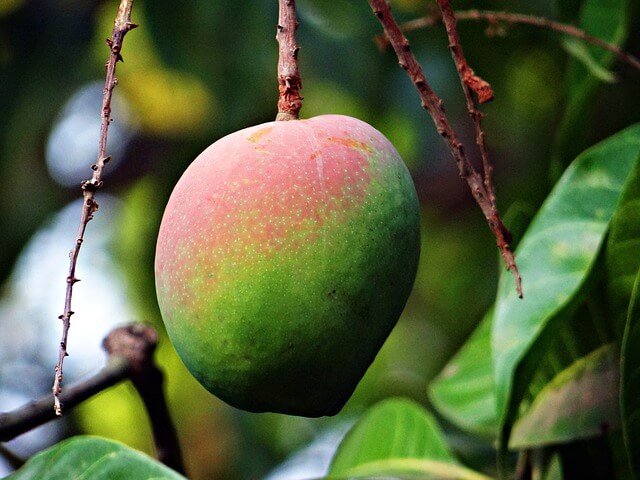The role of mango in nutrition - check why it is worth eating
- How many calories does mango fruit have?
- Which mango is the best?
- Why is it worth trying mangoes?
- What makes mangoes special? How do you eat them?
In recent years, the mango fruit has become increasingly appreciated, particularly for its exceptional flavor and high nutritional value. More and more people are choosing to use the fruit in cooking, as evidenced not only by sales figures but also by the popularity of mango-containing foods. It's an excellent addition to salads and desserts, as well as a low-calorie fruit.
How many calories does mango fruit have?
The calories in a mango depend on the size of the fruit. The average weight is about 280 grams, which means that a mango of this size has about 170 kcal (about 60 kcal in 100 g). Compared to bananas or dried fruit, this isn't much. Combined with its unique, fresh flavor and beautiful color, mango is often used to make low-calorie desserts like sorbets or delicious smoothies and cocktails.
Which mango is the best?
What should you look for when choosing a good mango? The most important factors are its color and how hard the fruit is. A ripe mango should yield slightly under pressure. The skin color should be reddish, although this aspect depends on the variety. Of course, it's a good idea to avoid any blemishes or damage that might appear on the skin's surface. If you buy unripe, hard mangoes, you should store them for several days, for example, in an open basket, so the fruit can fully ripen and be ready to eat.
Many people say that the best mangoes are those eaten straight from the tree. Unfortunately, few people have such an opportunity, as the mango fruit is found only in subtropical and tropical climates. It is not widely imported to Poland, but is gaining increasing popularity. Although it is not the cheapest fruit, the amount of vitamins and flavor it contains makes it worth diversifying your diet from time to time .
Why is it worth trying mangoes?
The answer to this question is relatively simple, and it's not about taste or smell. The yellow flesh of the fruit conceals a wealth of vitamins and valuable nutrients for the body. It turns out to be a good addition to a mango diet, because the substances it contains not only facilitate the absorption of iron but also the digestion of proteins. It should also be noted that these nutrients also contribute to maintaining normal blood pressure and have a positive effect on the heart.
Mangoes contain vitamins A and E that support skin and eyes, and vitamin C strengthens the immune system. Mangoes are also an excellent source of fiber, naturally supporting digestive processes. They also contain valuable micronutrients such as magnesium, copper, and potassium. Magnesium is responsible for regulating muscle contractions and also contributes to maintaining concentration.
What makes mangoes special? How do you eat them?
Those trying mango for the first time will likely notice that, in addition to its sweetness, it also has a unique flavor, so appreciated by lovers of Indian or Thai cuisine. Mango has a pleasant, fresh, and slightly honey-like flavor, but its subtle sweetness makes it perfect for eating raw, in desserts, smoothies, or savory dishes.
How do you eat a mango without being irritated by the pit inside? Experts recommend cutting the two flat parts of the mango as close as possible to the irregular pit, then dice the flesh close to the skin. Be careful not to cut it. After that, all that's left is to turn the skin over and gently tear off the flesh cubes.
THE PUBLISHER'S CHOICE
Almonds 1 kg BIOGO
- €11,69
€13,75- €11,69
- Unit price
- / per
Walnuts 800 g BIOGO
- €8,65
€10,18- €8,65
- Unit price
- / per
Dried organic mango 400 g BIOGO
- €10,99
- €10,99
- Unit price
- / per
Dried White Mulberries 500 g ORGANIC
- €5,84
€6,87- €5,84
- Unit price
- / per
Dried organic figs 800 g BIOGO
- €30,12
- €30,12
- Unit price
- / per
Unpeeled buckwheat groats 1 kg BIOGO
- €2,81
€3,31- €2,81
- Unit price
- / per
Organic coconut flakes 500 g BIOGO
- €10,07
- €10,07
- Unit price
- / per
Organic oat flakes 600 g BIOGO
- €3,77
- €3,77
- Unit price
- / per
Organic cashew nuts 1 kg BIOGO
- €19,99
- €19,99
- Unit price
- / per
Milk thistle seeds 1 kg BIOGO
- €3,99
- €3,99
- Unit price
- / per









































































































































